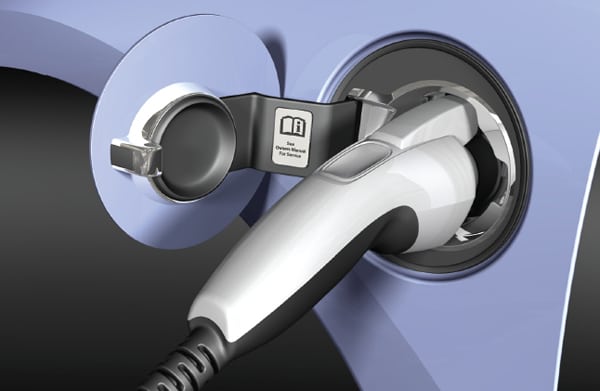Three Ways Utilities Can Accelerate EV Adoption

Electric vehicles are coming. Do you hear them? (Probably not.)
The exact speed of our collective embrace of electric vehicles (EVs) will vary around the country-due to factors such as EV familiarity, vehicle availability, purchase prices and incentives-but the cars are coming down the road at a steady clip. In the immediate future, U.S. President Joe Biden has greatly prioritized climate, and especially green energy. Further out, some statistics show that the annual global share of new passenger EVs is increasing by 50% every year, meaning EVs could make up a majority of all light-duty vehicle sales by 2028. Other statistics show that 52% of new vehicle sales will be all-electric by 2030.
COMMENTARY
However, even in the most optimistic of scenarios, it will probably be near the end of the 2040s before we begin approaching anything resembling a majority of EV's. This is mainly for two reasons:
- The average modern car today lasts about 16 years on average (with average car ownership, similarly, lasting about 12 years), meaning it will take generations to fully cycle electric cars into the rotation when you factor in the steady pipeline of used internal combustion engine (ICE) vehicles already available.
- The task of building a nationwide infrastructure big enough (and complex enough) to support a millions-deep fleet of consumer electric cars is a massive and complicated one that requires cross-sector collaboration.
Some may also cite a third reason regarding EV range, but I believe we are well down the path to seeing that challenge resolved. So, what should utility companies be thinking about during this cultural and industrial transformation to our transportation? How will they be affected? Let's talk about a few ways we can facilitate a thoughtful and efficient rollout of our EV infrastructure, starting with the focus areas for today's leading utility companies.
Avoid Double-Charge ThinkThe growth of an electrified" society over the past couple decades has been undeniable, whether it's changing the way we deliver power, gas, water or trash pick-up. Not only that, consumer expectations of utility companies have changed dramatically, due to an increased focus on climate change and sustainability. Juxtaposing this against the demand for a reliable supply of affordable energy, it's understandable that people's ears would perk up when someone like Elon Musk claims that America's electricity production would need to double to help the national economy transition to EVs.
POWER has been reporting on the electric vehicle (EV) market in recent years as utilities explore the effect of EVs on their business models. Want to learn more? Read Driving Change-The Impact of EV Adoption" in the March 2020 issue of POWER.
However, it's not as dire as Musk makes it sound. We have time to prepare. As mentioned above, this isn't a transformation that will happen overnight. And, in fact, it won't lead to strain; it will lead to redistribution. For example, utilities can encourage consumers to charge their EVs when electricity demand is lowest (i.e. when providers have excess power-generating capacity available) and subsidize consumers for delivering power back to the grid during demand peaks. This is just one solution, but it's low-cost and effective. Consumers would see a financial benefit, and utilities would be able to spend less on resiliency and more on upgrading the grid.
 Michael O'Donnell
Michael O'DonnellIn other words, EVs themselves can help solve the problem they're creating: the need for more power-generation capacity.
Stick Together on Unpaved RoadsIf we learned anything from the race to platform adoption over the last decade or so, it's that innovation is great, but a baseline of standardization is essential as well. Remember the headache of needing to charge your iPhone but only being able to find an Android charger? Similarly, imagine pulling up to a charging station and you not being on that charging network.
In the case of transitioning to EVs, every part of the ecosystem is vital for this transition-and transformation-to work. Otherwise, entire sections of the national infrastructure will be developed entirely in a vacuum.
Simply put, utilities and developers should focus on being connectors of the grid, so energy can go to each and every endpoint. We have seen the beginnings of this with the National Electric Highway Coalition, which is made up of 53 utilities with the stated goal of developing a nationwide fast charging network by 2023. It's this type of collaboration that will help drive the level of standardization necessary to accelerate EV adoption and allow for a common platform off which to innovate and differentiate as technology continues to evolve over the next decade.
This collaboration, combined with a broader public-private partnership, will be necessary to roll out the needed EV infrastructure. It's going to take everyone from the automotive industry, local government, charging station companies, planning commissions, chambers of commerce and more to gain alignment on what's coming and what's necessary. Oil and gas companies are even getting into the EV charging space-one example is Shell, which has plans to roll out 500,000 charging stations over the next four years. Communication across all of the above industries and government constituencies is going to be a key element of this rollout being successful.
Let's bring our big-picture experiences and solutions together, and make sure no one is left behind.
Start-Up and Go: Embracing AgilityThis one's simple. To embrace the coming changes EVs will bring, utility companies must be more agile than ever. You must be prepared for adapting new approaches, new business models and new ways of thinking, so you can take advantage of the way things evolve.
This is where smart leadership and smart technology have to work together-to find a better way for utilities to best determine what they charge, at what rates, at what time of day and more. The fundamentals of running a business might not change, but the solutions and strategies necessary to run it day-to-day very well might.
For instance, not only should utilities structure rates to incentivize charging at times when low-cost, renewable energy is abundant and demand is lower, they should provide a suite of options that accommodate the varied needs and capabilities of electric passenger cars and MHDVs (medium- and heavy-duty vehicles), ensuring fuel-cost savings where feasible and minimizing overall grid infrastructure build-out.
There are countless cultural and sociological factors to consider as well, such as the fact that communities of color and disadvantaged groups make up a higher percentage of the population near roads and highways (meaning they shoulder the greatest health burden from vehicle pollution). As a result, deployment of charging stations should be prioritized in these areas, where air quality benefits will be felt immediately.
By working together, we will be able to drive more rapid, widespread and equitable deployment of EVs and their infrastructure. Not only that, we can help ensure the transformation occurs in a way that maximizes climate, health and economic benefits. Because with the right approach, we can all effectively rise to the challenge of ushering in a new era of human transportation-one that's cleaner, greener and better for everyone in the long run.
Let's ride.
-Michael O'Donnell is National Vice President of Utilities at SAP, a software and technology solutions company.
The post Three Ways Utilities Can Accelerate EV Adoption appeared first on POWER Magazine.